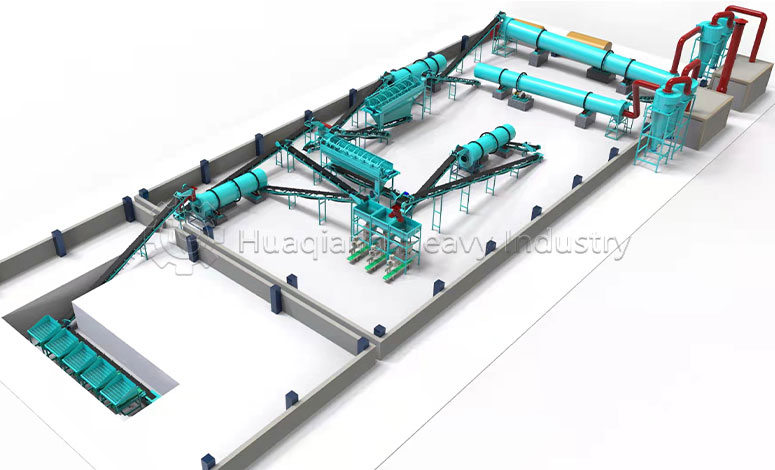In the highly competitive fertilizer production industry, efficient equipment maintenance directly impacts production line stability and operating costs. This article systematically introduces seven proven maintenance strategies to help you maximize equipment lifespan, reduce unplanned downtime, and maintain optimal production efficiency.
Key Data: Industry research shows that implementing systematic maintenance plans can reduce equipment failure rates by 40% and increase production efficiency by over 25%.
1. Daily Cleaning and Lubrication: Foundation of Preventive Maintenance
Thorough equipment cleaning after daily shutdown is crucial to prevent corrosion and material buildup. Special attention should be paid to:
- Removing all residual fertilizer particles and dust, especially in hard-to-reach areas
- Lubricating all moving parts with correct lubricants at manufacturer-recommended frequencies
- Inspecting and cleaning lubrication points to prevent contaminants from entering bearings and gears
2. Regular Inspection of Critical Equipment: Identifying Potential Issues
| Equipment Type | Inspection Focus | Recommended Frequency |
| Crushing/Screening Equipment | Blade wear, screen integrity, bolt tightness | Weekly |
| Mixing/Granulation Equipment | Paddle wear, drum condition, sensor calibration | Bi-weekly |
| Transmission System | Motor temperature, reducer condition, belt tension | Daily |
3. Spare Parts Management: Minimizing Downtime
Establishing a smart spare parts inventory system can significantly reduce repair time. Key measures include:
- Identifying critical spare parts based on equipment failure history
- Setting minimum stock levels and implementing automatic replenishment
- Recording each spare part’s service life to predict replacement time
4. Electrical System Maintenance: Ensuring Safe Operation
Electrical failures are common causes of unexpected downtime. Regularly:
- Clean control cabinets and inspect wiring connections
- Test all safety devices and emergency stop functions
- Monitor motor current and temperature anomalies
5. Standardized Maintenance Plan: Systematic Management
Develop a tiered maintenance plan:
- Daily:Basic inspection and cleaning
- Weekly:Detailed component inspection
- Monthly:Preventive replacement of critical parts
- Annual:Comprehensive overhaul and calibration
6. Staff Training and Knowledge Management
Investing in employee training yields long-term returns:
- Operators should master basic troubleshooting skills
- Maintain detailed equipment maintenance logs
- Regularly review failure history to optimize maintenance strategies
7. Rapid Response Mechanism: Minimizing Downtime Impact
Establish a tiered response system:
- Frontline staff handle simple issues (e.g., clog clearing)
- Technical specialists address complex failures
- Maintain good relationships with equipment suppliers for quick service
References:
[1] IFA Equipment Maintenance Best Practice Guidelines, 2023 [2] “Economic Benefits of Industrial Equipment Preventive Maintenance”, Journal of Mechanical Engineering, 2022 [3] Global Fertilizer Production Equipment Maintenance Benchmark Report, 2021


